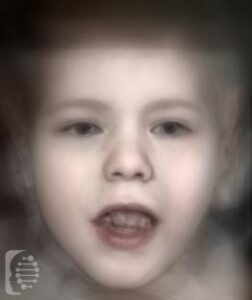What is Allan-Herndon-Dudley syndrome?
This rare disease is a genetic inherited condition that affects mainly males, due to the way in which it is inherited.
It primarily affects brain development and in turn intellectual ability. Limited to zero speech development is also a defining feature of this syndrome.
This syndrome is also known as:
AHDS Allan-herndon Syndrome; Mental Retardation And Muscular Atrophy Mental Retardation, X-linked, With Hypotonia Monocarboxylate Transporter 8 Deficiency T3 Resistance, Triiodothyronine Resistance
What gene change causes Allan-Herndon-Dudley syndrome?
The syndrome is an X-linked recessive condition. Mutations in the SLC16A2 are responsible for the condition.
Syndromes inherited in an X-linked recessive pattern generally only affect males. Males only have one X chromosome, and so one copy of a gene mutation on it causes the syndrome. Females, with two X chromosomes, only one of which will be mutated, are not likely to be affected.
What are the main symptoms of Allan-Herndon-Dudley syndrome?
Moderate to severe intellectual disability is a major symptom of the syndrome. This includes the development of zero to limited speech.
Other major symptoms include hypotonia, weakness in the muscles related to under developed muscles, muscle stiffness and involuntary movements. This affects an individual’s ability to move and walk, and by adulthood most individuals with the condition are wheelchair bound. It may also cause bowel and urinary incontinence.
Facial features of the condition include a narrow face, large ears and underdeveloped cheekbones.
Possible clinical traits/features:
Stahl ear, Type I diabetes mellitus, Microcephaly, Severe global developmental delay, Scoliosis, Spastic tetraplegia, X-linked dominant inheritance, Spastic paraplegia, Rotary nystagmus, Congenital onset, Ptosis, Proptosis, Camptodactyly of finger, Upslanted palpebral fissure, Delayed CNS myelination, Limitation of joint mobility, Abnormal conjugate eye movement, Clonus, Drooling, Dysarthria, Feeding difficulties in infancy, Flexion contracture, Pes planus, Prominent antihelix, Open mouth, Single transverse palmar crease, Skeletal muscle atrophy, Cerebral calcification, Ataxia, Abnormality of the neck, Abnormality of the rib cage, Babinski sign, Neurological speech impairment, Neonatal hypotonia, Narrow forehead, Intellectual disability, progressive, Intellectual disability, severe, Involuntary writhing movements, Narrow face, Pectus excavatum, Leukodystrophy, Macrotia, Irritability, Increased thyroid-stimulating hormone level, Hypothyroidism, Incoordination, Inability to walk.
How is Allan-Herndon-Dudley syndrome diagnosed?
To find out if someone has a diagnosis of Allan-Herndon-Dudley syndrome, it is important to have a consultation and evaluation with a clinical genetic specialist. Specialists may also suggest specific genetic testing or other types of tests to help reach a diagnosis. FDNA’s AI technology can help speed up the diagnostic process by analyzing facial features and other health information.
Evaluation
Don’t let your questions stay questions
Ease your concerns, gain a better understanding of your child’s development process, and connect with medical professionals in your area.


